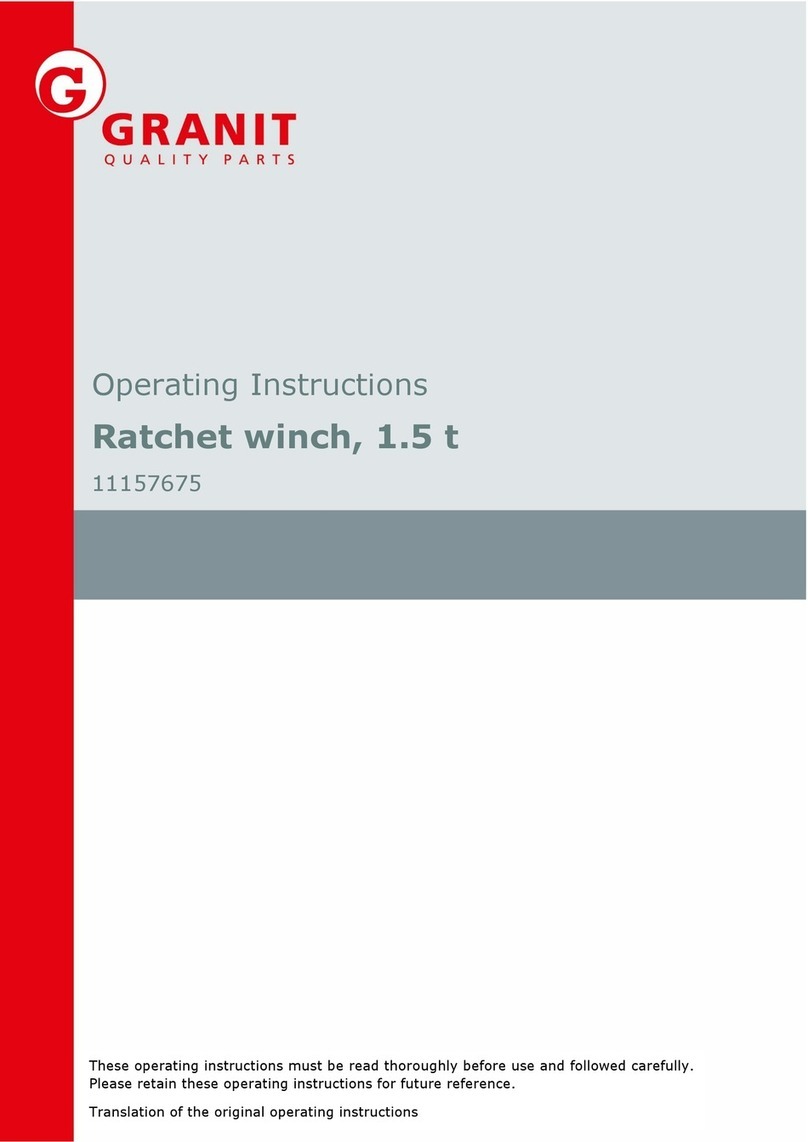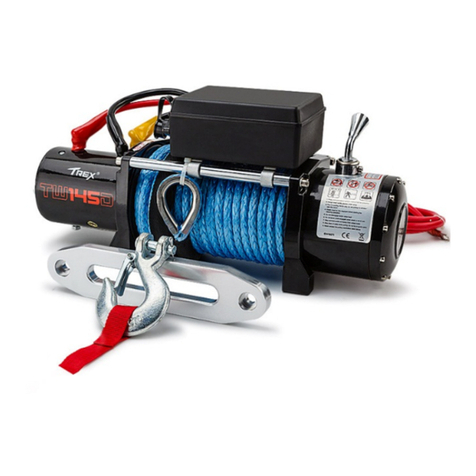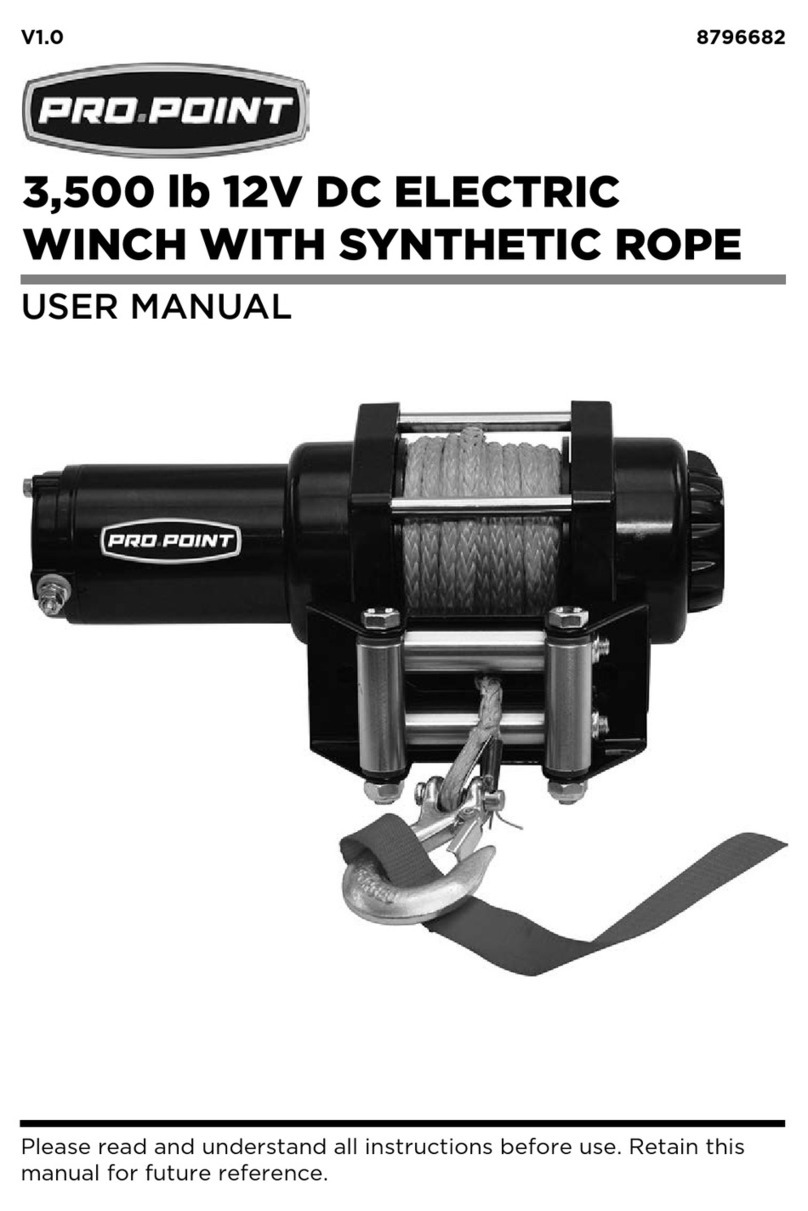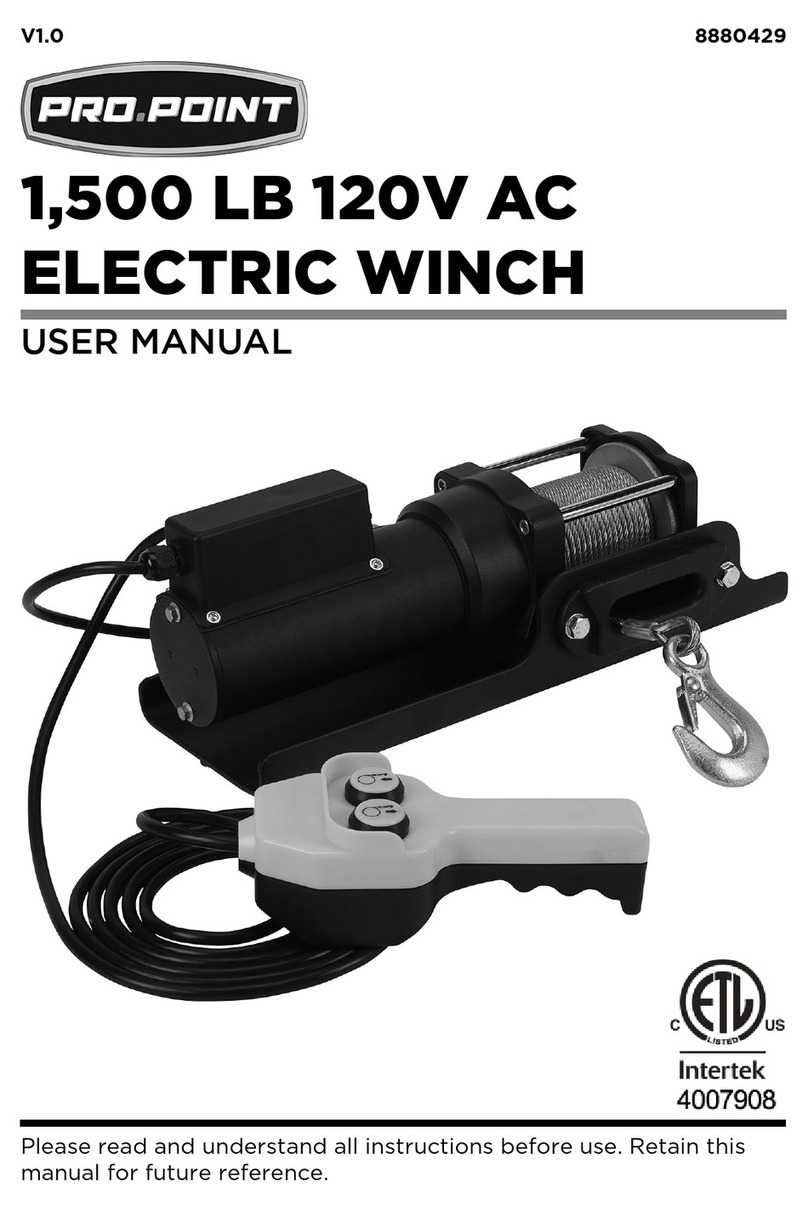
8798175 4,500 LB 12V DC UTV WINCH V1.0
6 For technical questions call 1-800-665-8685
13. Secure the load after moving it with the winch. Do not rely on the
winch to hold a load in position for an extended period of time.
Never leave the load unattended.
14. Observe the spooling of the cable onto the drum. Side pulls can
cause the cable to pileup at one end of the drum. To correct
uneven stacking, spool out that section of cable and move it to
the other end of the drum and continue winching. Uneven
spooling causing cable pileup can interfere with the winch,
causing damage to the winch.
15. Do not use the winch to transport animals or people.
16. Place the vehicle’s transmission in neutral to avoid damaging it
while winching.
17. Never move the vehicle to ‘assist’ the attached winch pull a load.
This may place too much stress on the winch and cable, causing
damage to the mechanism or cable.
18. Apply blocks to a vehicle while connecting and disconnecting
the winch cable.
19. Do not use this winch with a recovery strap.
ELECTRICAL SAFETY
WARNING! Do not touch or handle a live tool with any part of your
body that is wet or damp. Wet skin reduces resistance to electrical
current, increasing the danger of a serious or fatal shock.
1. Disconnect tool from power source before cleaning, servicing,
changing parts/accessories or when not in use.
2. Protect yourself against electric shocks when working on
electrical equipment. Avoid body contact with grounded
surfaces. There is an increased chance of electrical shock if your
body is grounded.
3. Water entering a tool will increase the risk of electric shock.
4. In the event of a power failure, turn off the machine as soon as
the power is interrupted. The possibility of accidental injury
could occur if the power returns and the unit is not switched off.
5. Do not alter any parts of the tool or accessories. All parts and
accessories are designed with built-in safety features that may
be compromised if altered.






























